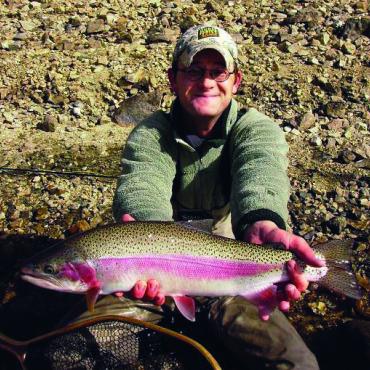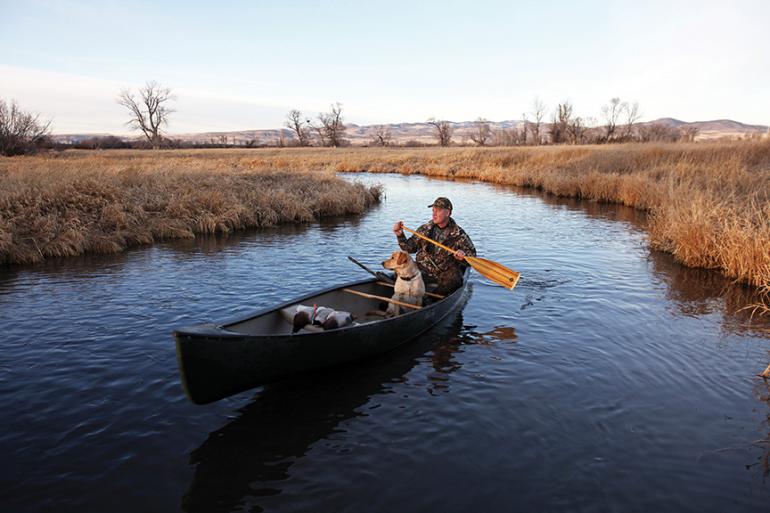Cast & Blast
Mastering the fall multi-sport.
It’s not often in this busy, modern world that a person can combine, and truly experience, two passions at once. But every autumn we get that chance, in a sporting overdose known as the “cast & blast,” or C&B. Simply put, a C&B means hunting and fishing on the same trip, often on the very same day, from the same boat. Here’s what you need to know before embarking on your own C&B journey.
The Gear
A good boat is a must. I’ve done these trips in everything from rafts to float tubes, but hard-sided boats are best. Drift boats, canoes, and jon boats all fit the bill, and with the exception of the canoe, are stable enough to allow retrieving dogs to do their jobs. The canoe is easier to transport and camouflage, though, and waterfowl tend to shy away from big red driftboats anchored up in the shallows.
For tackle, I prefer five- or six-weight fly rods and big ugly streamer, leech, and baitfish patterns, as predatory fish are seeking out calories in preparation for the lean winter months. The fishing is usually slower in the fall than during a summer hatch, but the fish are bigger. If you happen upon one of the larger, muddier rivers in the eastern reaches of our state, a lightweight spinning rod, bait hooks, and chicken livers are sure to bring in a tasty, whiskered bottom-dweller.
I recommend bringing only one gun: the 12-gauge Remington 870 Express. Sure, any other shotgun will do, but keep in mind that C&Bs are hell on gear—water, mud, ice, sand, dog hair, dirt—but the 870 is reliable, durable, and priced well. As always, the safety factor is paramount when combining boats, water, and firearms. Attention to detail should always top your checklist.
The Game, the Fish, and the Rules
C&Bs are amazing because of their variety. Early morning brings the whistle of mallard wings and the cough of shotgun blasts, while mid-afternoon holds the promise of reel-burning dives from big trout. And evening could even bring the chance of a big, river-bottom buck.
Your hunting kit should include all of the usual essentials: extra shells, a first-aid kit, wool or fleece clothing, rain gear, and survival extras. Remember: it is illegal to shoot waterfowl with lead shot (read that three times and then write it down). Most, if not all C&Bs include a mixed bag of game—but even if you’re honest and not using lead on the ducks and geese, Mr. Warden will still give you a hefty fine for having lead on your person. Leave the lead at home! A great alternative is bismuth shot shells, which do a similar job to lead shells, but cost enough that you can’t afford to take iffy shots.
With all of this seemingly open-ended fun, you might forget good hunting etiquette and respect for property owners. But the law doesn’t forget, and it’s very simple: recreational activities such as hunting and fishing must be conducted below the level of the ordinary high-water mark. Though a lot of gravel bars fit this description, a common misconception is that river islands are fair game. Wrong. If your feet are dry and there are mature trees on the island, it is probably private land. And big-game hunting requires landowner permission even within the high-water mark. Save yourself the fines and jail time by calling Fish, Wildlife & Parks or the Bureau of Land Management first. Have a route plan and a river map so you can mark choice spots, and likely bars and islands, as public or private. Find out more about Montana Stream Access law from fwp.mt.gov, bigskyfishing.com, and blm.gov/montana-dakotas.
Kurt Dehmer owns Durty Kurty’s Guide Service and is a frequent contributor to Outside Bozeman.













